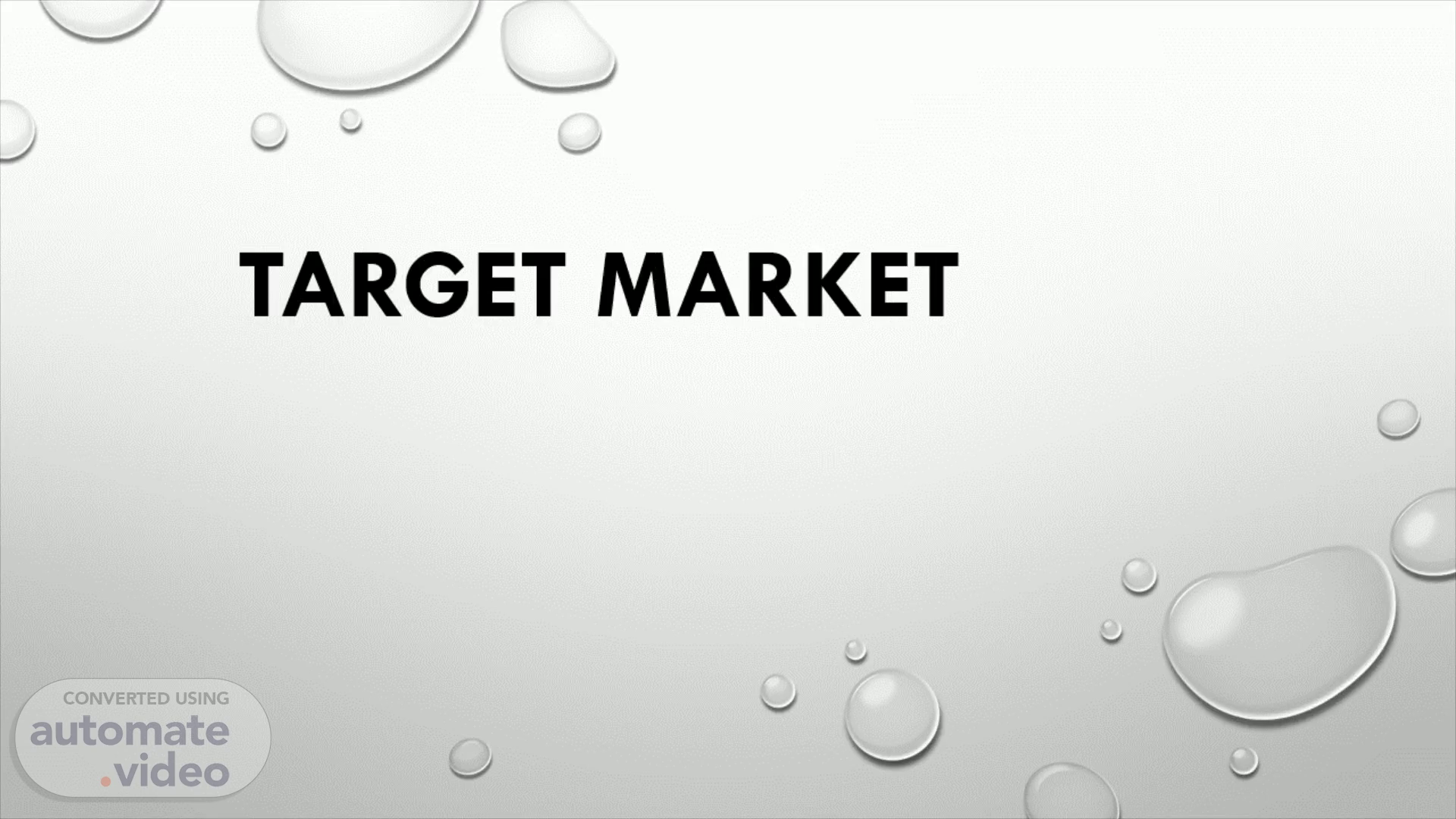Scene 1 (0s)
TARGET MARKET. Is a group of potential customers that you identify to sell products or services to..
Scene 2 (19s)
MARKET. in general - is a place where buyers and sellers can meet to facilitate the exchange or transaction of goods and services. Markets can be physical like a retail outlet, or virtual like an e-retailer. in economics - a means by which the exchange of goods and services takes place as a result of buyers and sellers being in contact with one another, either directly or through mediating agents or institutions. in marketing - refers to the group of consumers or organizations that is interested in the product, has the resources to purchase the product, and is permitted by law and other regulations to acquire the product. mARKET ARE CLASSIFIED INTO FOUR STRUCTURES.
Scene 3 (1m 15s)
Types of market STRUCTURE. Perfect competition MONOPOLISTIC COMPETITION OLIGOPOLY MONOPOLY.
Scene 4 (1m 27s)
1. Perfect / pure competition. Large Number of buyers and sellers – No individual seller can influence price and have to accept market price Unlimited Competition: so many firms, that suppliers lose the ability to set their own price . Identical Products , No Differences (Ex. Salt, Flour and Corn) Well informed buyers and sellers No Barriers to Entry. Sellers are free to enter the market, conduct business and free to leave the market. (Low cost to enter) However, I n a perfectly competitive market, the profit margin is fixed, and sellers cannot increase prices, or they will lose their customers. MORE COMPETITION.
Scene 5 (2m 32s)
2. Monopolistic competition. Same as pure competition except for its product differentiation (Product Branding - can be color, packaging, store location and others) it has a large number of large companies (but fewer than perfect competition) Firm has some control over price Monopolistic competitors use nonprice competition Short Term - the monopolistic company maximizes its profits and enjoys all the benefits as a monopoly. The company initially produces many products as the demand is high. Therefore, its Marginal Revenue (MR) corresponds to its Marginal Cost (MC). However, MR diminishes over time as new companies enter the market with differentiated products affecting demand, leading to less profit. MORE COMPETITION.
Scene 6 (3m 39s)
3. Oligopoly. It consists of a small number of large companies that sell differentiated or identical products which are usually standardized . Firms works together on setting the prices. Since there are few players in the market, their competitive strategies are dependent on each other. Oligopolists act independently by lowering prices soon after the first seller announces the cut Few producers control supply and price Medium barriers to entry: Difficult to Enter the market because the competitors work together to control all the resources & prices. The actions of one affects all the producers . Ex: Supermarket, Banks and Internet Provider LESS COMPETITION.
Scene 7 (4m 45s)
4. monopoly. In a monopoly market, a single company represents the whole industry. It has no competitor, and it is the sole seller of products in the entire market. This type of market is characterized by factors such as the sole claim to ownership of resources, patent and copyright, licenses issued by the government, or high initial setup costs. High barriers to entry Exact Opposite of Pure Competition.
Scene 8 (5m 24s)
Types of market STRUCTURE - recap. Perfect competition – Large buyer and seller – same product – controlled profit MONOPOLISTIC COMPETITION – Large buyer and seller (fewer than perfect competition) – competition is not on the price but on product differentiation they can control profit OLIGOPOLY – Few firms controls the prices – players are interdependent on pricing. MONOPOLY – Sole seller.
Scene 9 (6m 14s)
PHASES OF MARKET STRATEGY.
Scene 10 (6m 29s)
The Planning Phase. Goals are set and actions defined for achieving the goals it is most important as it analyzes internal strengths and weaknesses, external competition, changes in technology, industry culture shifts and provides an overall picture of the state of the organization..
Scene 11 (7m 13s)
The Planning Phase. step 1: Situation analysis D efines the strengths, weaknesses, opportunities and threats of your business and reveal your company’s position in respect to the market..
Scene 12 (8m 39s)
Product • Features • Brand name • Packaging • Service • Warranty Price • List price • Discounts • Allowances • Credit terms • Payment period Product Place Promotion • Advertising • Personal selling • Public relations • Sales promotion • Direct marketing Price Promotion Place • Outlets • Channels • Coverage • Transportation • Stock level.
Scene 13 (9m 22s)
IMPLEMENTATION PHASE. The implementation process involves placing the product or service you develop on the market for consumption, using the distribution plan you created based on the target market you're trying to reach. Use the promotional plan you developed to help inform, persuade and remind customers that your product or service exists..
Scene 14 (9m 58s)
EVALUATION PHASE. The evaluation phase is the checking phase. This process involves ensuring that the results of the program are in line with the goals set. The marketing team, especially the manager will need to observe any deviations in the plan and quickly correct negative deviations to get back on course.
Scene 15 (11m 16s)
PHASES OF MARKET STRATEGY.
